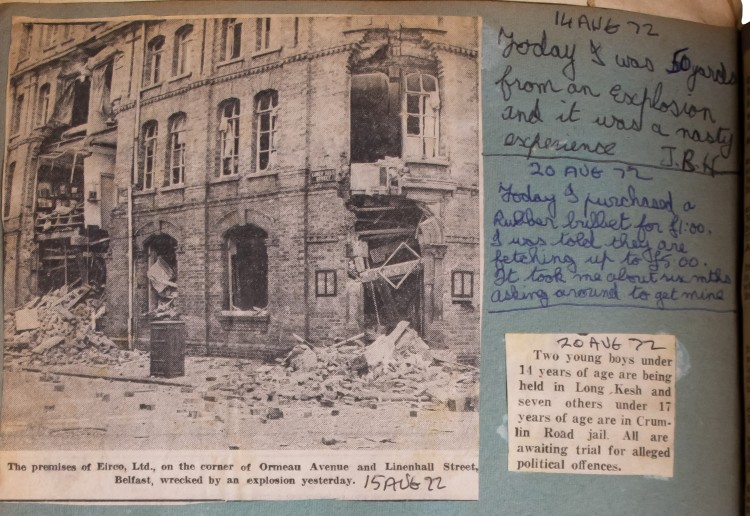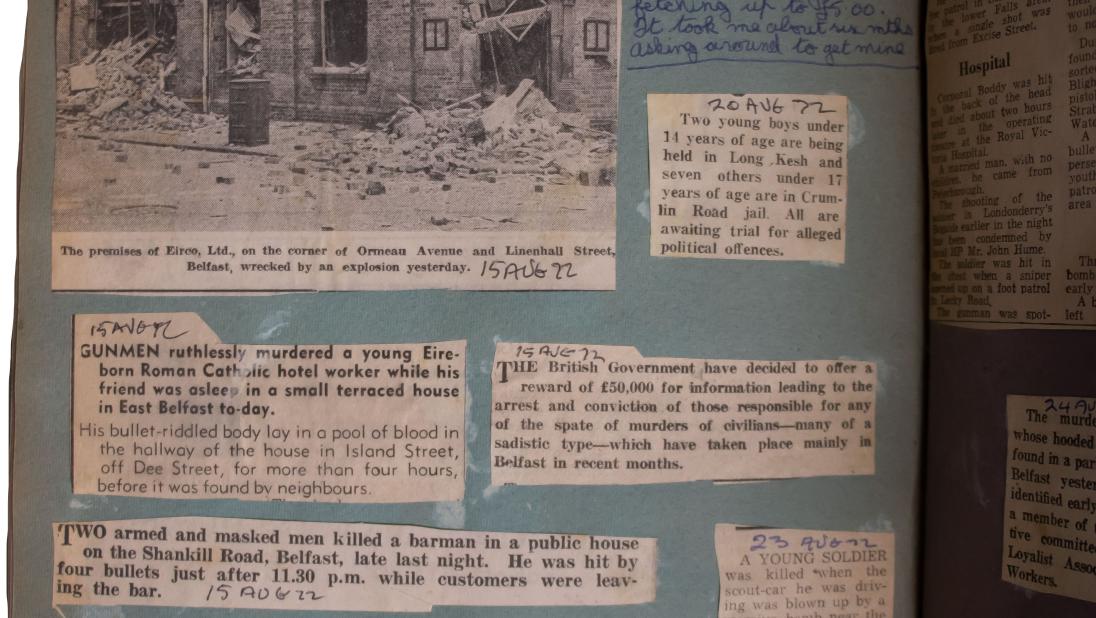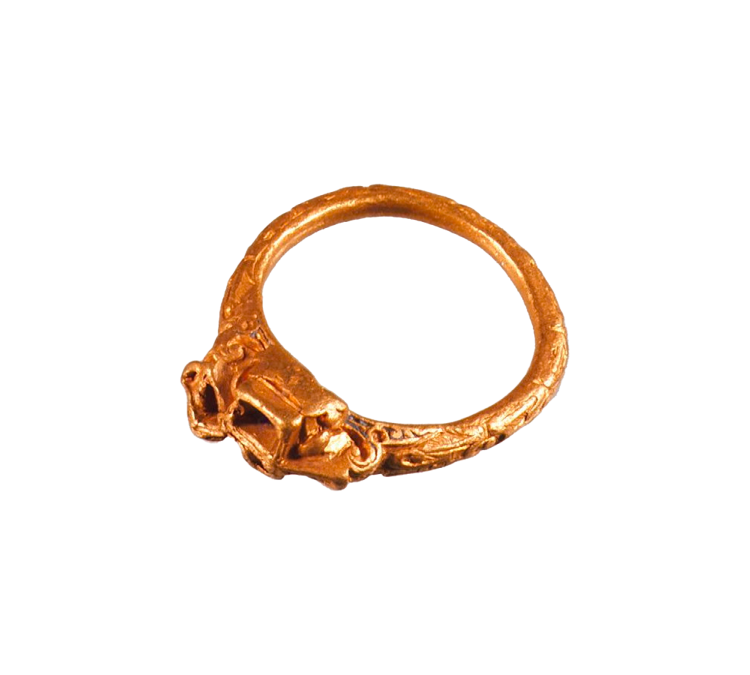
1970s Collection Highlights
Prehistoric fish, the Spanish Armada and a Nobel Peace Prize
50 years ago, in 1972, the concrete extension to the museum’s 1929 building was opened. It was designed by Francis Pym ‘to embrace the old building and to enfold the two parts to form a gradually ascending spiral.’

Though not everyone loved its brutalist concrete, or the many steps required to connect the different levels of the two buildings, Pym’s design won awards, and was praised for the way it echoed the classical features of the original J.C. Wynne building.

Prize money from a Museum of the Year award was used to purchase one of our most extraordinary specimens – the coelacanth. Long thought extinct, the oldest known coelacanth fossils are over 410 million years old, but this living coelacanth was found in 1938 in deep waters off South Africa.
This was one of the worst decades of the Troubles, and many wanted only to get on with everyday life. It was later that curators started actively to collect the Troubles material that gives us a sense of life then.

Department of Environment, 'Central Belfast Traffic Regulations',
As this map shows Belfast city centre in the 70s was ringed by security checkpoints - few vehicles were allowed into the centre for fear of car bombs and every pedestrian was searched on entry.
The violence, and the news updates, were so unremitting that it was unusual to want to keep a record. But one Belfast resident chose to do so by creating this scrapbook of comments and newspaper cuttings.
Scrapbook
In 1976 the deaths of three young children who had simply been walking along a pavement with their mother Anne Maguire, more victims of the Troubles, shocked and horrified so many that a series of protests developed into a peace movement. Its leaders, Betty Williams and Mairead Corrigan, the sister of Anne Maguire, were jointly awarded the Nobel Peace Prize for their ‘courageous efforts’. Mairead chose to give her medal to the Ulster Museum.
While there were few tourists in Belfast at this time, local visitors appreciated that the museum offered a glimpse into different worlds. And one new collection that went on display in 1970s was extraordinary enough to raise a different sort of international interest.
The Girona shipwreck had finally been found and excavated near the Giants’ Causeway. Built to carry 500 men, the Girona had 1300 on board when it sank. It was part of a Spanish Armada driven north around Scotland after a failed invasion of England in 1588. Without proper maps, many came to grief on the rocky coast of Ireland, and soldiers from other ships had sought refuge on the Girona.
Artefacts, which had amazingly survived nearly four centuries under the sea, were immediately at risk when raised from the sea bed, and the museum’s conservation team took on this major task.
Joanne Lowe, now our Collections Care Manager, can be seen here restoring a gun carriage wheel from another Armada wreck, the Trinidad Valencera.
Some of the most extraordinary Armada finds are everyday objects, like leather shoes, a velvet collar and a pine cone, that only survived because of the unique conditions under the sand and water. Most eye-catching though are the possessions of Spanish noblemen, like this fine gold ring, and ruby-studded salamander which was believed to offer protection against fire.

Treasures from the Girona
In 1976 Malone House, where our costume and textiles collection was stored, was bombed. No one was hurt but almost the entire collection of over 10,000 items was destroyed.

Firemen endeavour to extinguish the Malone House fire
To help museum staff keep track of objects, each object has its own distinct label. After the Malone House fire erased almost every item in our fashion collection, the Lennox Quilt was renamed: BELUM.T1. Meaning: 'Belfast, Ulster Museum, Textiles, Object one' - the collection's sole object. Since then, our curators' careful purchasing plan has rebuilt an ambitious and globally admired fashion collection. The collection now ranges from seventeenth-century design to Chanel and Louis Vuitton; all with the lucky Lennox Quilt at its foundation.
One of the few things that that survived was this quilt which was on display at the museum. It was made in 1712 by Martha Lennox, who stitched it by hand. Since then our costume collection has been gradually rebuilt with a focus on contemporary collecting.







